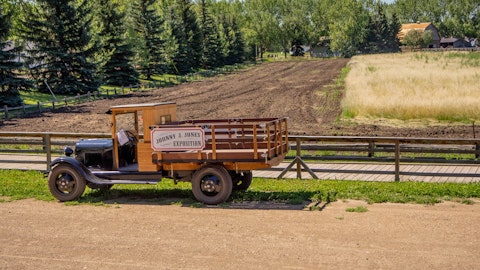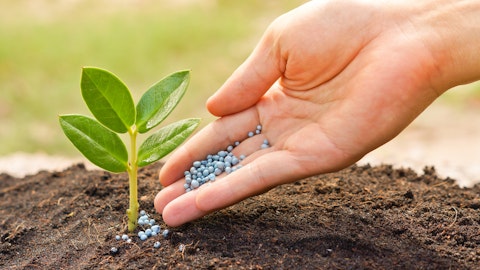Enrique Lopez Lecube: Hi, Kemp. This is Enrique, thanks again for joining and for the question. So those transaction expenses are related mostly to the two financial agreements that were finalized in connection with a merger with Pro Form right after the closing. So those transcended into the second quarter, as well as some other expenses that had not been accrued for the first quarter that were related to the merger itself. And all of those amount to $100,000.
Kemp Dolliver: Okay, super. And then my other question relates to the performance of the HB4 products. And I’m trying to put your current comments in context to with what you had said, say, two years ago, when you were mainly referencing what would have been field trial data. And roughly, we were looking at increases in crop production of, I think, generally in the teens, whether it’s 13%, 16%, or the like is probably less critical to the question. But when you step back from the data and look at it in aggregate, is the current performance for the current generation of crops consistent with that, or is it a little bit better, or how would you characterize it that way?
Federico Trucco: Hi, Kemp, this is Federico, thanks for participating in the call. And thank you for the question. I think that it’s kind of surprising, but the field data that we’re collecting, it’s turning out to be better than what we anticipated in the product development process, and the R&D, trialing, if you will, that was done with the technology, or the state where we were two years ago, even though we still allude to HB4 read has been at 20% yield improvement. And that is because we’re trying to expand the targeted region to above the two tons per hectare, and not just be limited to lowest yielding areas where we can get these 43% averages. And what we are seeing in the field today, and what farmers are seeing in the field, which is far more relevant than what we see ourselves is better than that.
So I think it’s unusual, because it usually goes the other way, when you can take technology to the field, it tends to perform not as well as how it performs in control trials or even in greenhouse settings. So we were very pleased with the outcome. And, obviously, to have farmers generate this information themselves, gives us a level of awareness that I think we can profit from — in the upcoming season.
Kemp Dolliver: That’s great. And just one related question. And that is, when you’re — as a farmer, do you really know in advance the likelihood of severe drought? I think this is one of the great uncertainties of that being a farmer, say, and where I’m going with this is if you’re able to deliver something in this range, that even if you generally have good experience, that there’s an incentive to go ahead and use an HB4 product just because it gives you somewhat higher level of certainty that you’ll be able to have a decent harvest?
Federico Trucco: Right, I think that’s the right way to think about it. So almost like an insurance policy. And the one aspect of the technology that is critical in working that way is that we were able to uncouple, if you will, the benefit that is observed under drought, with any kind of yield drag under otherwise normal conditions. So there’s — and what we’re even seeing is yield delivery in high yielding environments. And that’s part of what we try to present today in the call. So obviously, like any other insurance policy, you don’t want to use it, you rather have the high yield, and then you don’t care about the incremental cost of a seed. But if for whatever reason, you’re hit by a historical drought, and you’re hurting because of the significant decline, to be able to outperform by 40% compared to conventional varieties, more than justifies the investment.
So that is where we are today with wheat. I think this is one of the reasons why we think that technology can be adopted well beyond these drought prone regions, and become a true sort of broad acre opportunity in Latin America and potentially in other geographies around the globe.
Kemp Dolliver: Great, thank you.
Operator: Thank you. There are no further questions at this time. I will now hand you back over to Federico Trucco CEO for closing remarks.
Federico Trucco: Well, thanks everyone for joining. Obviously, we’d much rather like to report quarters where we grow sales by 70% and double our profitability. So be assured that we are our worst critics. And we’ll identify ways by which we can improve. Even despite the historical drought conditions, there are always things that we can do to be slightly, slightly better. And so this is in a way also gentle warning to keep our business disciplined and control costs, particularly in geographies, where we might have become a little bit more lenient because of the growth and expansion. We’ve been observing over the last two years. So we like to win in everything we do everywhere. And that attitude, we will like to reiterate to investors in this call. I hope you’re having a great week and we look forward to further communicating progress in our business in the months to come. Thank you very much. And I think this ends the call
Operator: Bioceres Crop Solutions fiscal second quarter 2023 financial results conference call has now completed. You may now disconnect your line.
Follow Bioceres Crop Solutions Corp. (NASDAQ:BIOX)
Follow Bioceres Crop Solutions Corp. (NASDAQ:BIOX)
Receive real-time insider trading and news alerts




